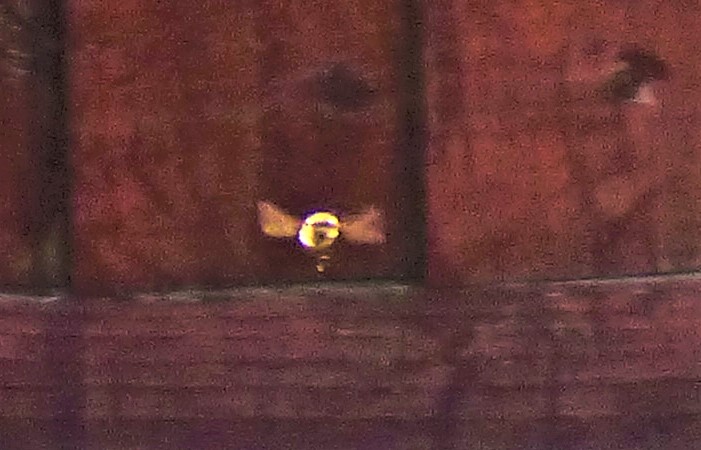INTRODUCTION
Welcome to the latest installment in my series of “All Time XIs”. Today we will look at Leicestershire. However, before getting into the main body of today’s post I have a small additional thing to do…
INTRODUCING MY MOTHER’S BLOG
Yes, my mother has started blogging. Her first post, about the camellias that grow near her home in Cornwall can be viewed here – and I urge to you do so, and to offer her comments and support.
LEICESTERSHIRE ALL TIME XI
- Cecil John Burditt Wood – an opener who had limited support from the rest of his batting order. He holds two batting records to this day: most times anyone has carried their bat through a completed first class innings (17 – two ahead of joint second place WG Grace of Gloucestershire and Dick Barlow of Lancashire), and the unique double feat of carrying his bat for centuries in both innings of a match, which he did against Yorkshire – 117 not out in the first dig and 107 not out in the second, and his team still lost by nine wickets. At the end of that match George Hirst paid him a Yorkshire tribute – “next time master Wood, we’ll get a gun and shoot you out”.
- Les Berry – another opener who could never count on much support from lower down the order (Leicestershire have not historically been a strong county, and they are not currently bucking that trend).
- John Steele – a solid right handed batter and capable purveyor of left arm spin.
- David Gower – a left handed batter of the type for whom words such as elegant and graceful were invented. Unlike those above him in this order he did get the chance to prove himself at the very highest level, and 8,231 test runs at 44.25 is an eminently respectable record. His greatest series was the 1985 Ashes when he scored 732 runs, including scores of 166 at Trent Bridge, 215 at Edgbaston and 157 at The Oval. Five years after that he scored another 157 at The Oval to save a match against India. Another notable effort was his 154 not out in eight hours to save the 1981 test match at Sabina Park, Jamaica (England would lose their next ten test matches against the West Indies). A combination of narrow-mindedness, inflexibility and possibly (on the part of then captain Graham Gooch – see my Essex piece) envy from the England setup brought his international career to a premature close, which led to his retirement from the first class game. Immediately after his final departure England had an unqualified disastrous tour of the subcontinent. Gower, who had scored 200 not out against India at Edgbaston in 1979, could scarcely have fared worse than most of the England batters who were selected. In addition to his batting Gower was, until a shoulder condition affected him, a superb fielder.
- James Whitaker – a heavy scoring batter in his day (he was a county team mate of Gower for some years) who only got one England cap – England selection practices in the 1980s and 1990s were inconsistent at best and downright scandalous at worst, and the teams that emerged as a result of such practices tended to have very ordinary records as one might expect. Whitaker eventually became part of the 21st century England management structure and did well as a national selector. Although not completely eradicated, England selections in the 21st century have featured many fewer “WTF? moments” than used to be the case in the 1980s and 1990s, when they were almost the rule rather than the exception.
- *Ewart Astill – an offspinning all-rounder who did the season double of 1,000 runs and 100 wickets eight times in the course of the 1920s. Although he never got to perform the role due to the class based obsession with amateur skippers that prevailed in his day I have named in captain as I believe that he would have been good at the job.
- +Paul Nixon – an excellent wicket keeper over many years, and a useful batter as well.
- George Geary – a right arm medium-fast bowler who could bowl a good leg cutter, possessed immense reserves of stamina (in one test innings at Melbourne on the 1928-9 Ashes tour he had figures of 5-105 from 81 overs – yes you read that right, 81 overs in a single innings) and was also a useful lower order batter and a capable fielder. His CV includes two Ashes winning moments – at the Oval in 1926 he clean bowled Arthur Mailey to win the match and the Ashes, and at Melbourne in 1929 he smote a four through mid on the get England to their victory target of 332, which won them that match and out them invincibly 3-0 up in the series. Also, he features in what I believe (though feel free to comment if you reckon you can outdo me on this one) to be the most economical player to player chain spanning the whole of test cricket’s 143 year history. My rules are these: everyone in the chain must have played test cricket, and there must be a verifiable link between any two successive members of the chain. My chain runs as follows: Billy Midwinter who played for Australia in the inaugural test match in 1877 was also a county team mate of WG Grace who played for England in the first test match on English soil in 1880, WG in his last test match was a team mate of Wilfred Rhodes, who in 1926 was a team mate of George Geary, who in retirement coached at Charterhouse where one of his charges was Peter May (Surrey), who after his own distinguished career was done became a selector and was chair of the panel that picked Chris Broad (Nottinghamshire), whose son Stuart is now an England regular, making Stuart Broad, the current player, the seventh link in the chain. There are several other ways to link Grace to people who played in the inaugural test match, but no way to link Rhodes directly to any of them. Geary has the second cheapest ever first class ‘all ten’ to his name – 10-18 against Glamorgan, bettered only by Hedley Verity’s 10-10 for Yorkshire vs Nottinghamshire.
- David Millns – the last person to have worked at a coalface before becoming a professional cricketer, a right arm fast bowler, he was also a useful lower order bat (left handed). Injury problems meant that he never got to represent England. After his retirement he became an umpire and has done well at that job too. People who have been following this series will have already noted that I am sparing in my use of the term ‘all rounder’. This is because getting into following cricket when I did meant that with Ian Botham (Somerset) going into decline I witnessed a time when England were absolutely desperate for all rounders, and many people who were not good enough to warrant the label (in many cases inadequate in both departments) were touted as all rounders in an effort to fill the Beefy shaped hole in England’s ranks. In reaction against this I will only describe someone as an all-rounder if I genuinely believe that they would have warranted selection based on either part of their skill set. In this side in addition to Astill who was a genuine all rounder there are three players who have useful secondary skills that are not enough for them to be described as all rounders, at least in my book: John Steele, George Geary and Millns.
- Jack Walsh – an Australian left arm wrist spinner, and my overseas pick. He holds a several Leicestershire bowling records, and gives this side a bit of variety.
- Haydon Smith – a right arm fast bowler, who had some great moments in partnership with Geary, including a spell of consistent success in which they bowled together unchanged through four straight opposing innings none of which totalled as much as 80. On one occasion he let Harold Larwood have a bouncer, and when it was his turn to bat he had to face Larwood. Smith edged one of Larwood’s expresses into the slips where it was scooped up on the half volley. Smith instantly turned for the pavilion, and when the fielder tried to say that he had not caught it (a fine piece of honesty), Smith, who had a stutter, said “Yes you f-f-f-f-ucking well did” and continued his walk back to the pavilion – lesson learned about dishing out bouncers when you are genuine no 11 yourself methinks.
This team comprises a top three who are definitely capable of giving the innings a solid foundation, two high quality middle order batters, one left handed and one right handed, a genuine all rounder, a wicketkeeper who can bat, a medium-fast bowler who can bow a dangerous leg cutter, a left arm wrist spinner and two purveyors of out and out pace in Millns and Smith. With Geary and Millns both capable of providing useful batting support the order looks quite solid (which would be a bit of a novelty for Leicestershire!).
OMISSIONS
Maurice Hallam and Barry Dudleston were both fine opening batters, and when Darren Maddy’s career started I thought he was going to become an England regular, but he did not kick on. Willie Watson, Chris Balderstone, Sam Coe, Ben Smith, Clive Inman and Peter Marner all did good things for Leicestershire, although Inman and Marner were both told to go elsewhere by Ray Illingworth because he felt that with them around the team could not function as such. Illingworth himself could have had the role that I gave to Astill, but he was noted for under bowling himself as captain (Brearley mentions this in “The Art of Captaincy”) and does not strike me as having been quite so complete a player as Astill. The wicket keeping position was not contested in my book – although Roger Tolchard was named as reserve keeper in a few England tour parties that was largely a way a smuggling in an extra batter rather than a tribute to his keeping. Dick Pougher (pronounced ‘puffer’) was an early Leicestershire fast bowler who was part of the MCC bowling attack that routed an Australian XI for 18, the lowest score ever recorded by a team with that designation, while Jonathan Agnew, Les Taylor and Alan Mullally all got picked for England, but none were convincing at the highest level (although the first named of course has first dibs on a commentary gig, while the last named would have given extra variety as a left arm bowler). Harry Gurney, a left arm fast bowler who started with Leicestershire before decamping to Nottinghamshire, would have increased the variety of bowling available to this side, but though an England career seemed likely at one stage he is actually not quite in the front rank even of current performers. I have been restricting myself to one overseas player, and felt it important not to play fast and loose when dealing with a county in whose dressing room Afrikaans was once the first language. That meant that having chosen Walsh for the variety he provides I had to overlook one great and one high quality fast bowler, Andy Roberts and Winston Benjamin, and also one of the most talented batters ever to emerge from The Land of the Long White Cloud, Stewie Dempster (he did actually play briefly for his native land, so I felt that I could not regard him as a forerunner to Ben Stokes).
PHOTOGRAPHS
Yes, we have finished our look at Leicestershire, and it remains only for me to provide my usual sign off…
























